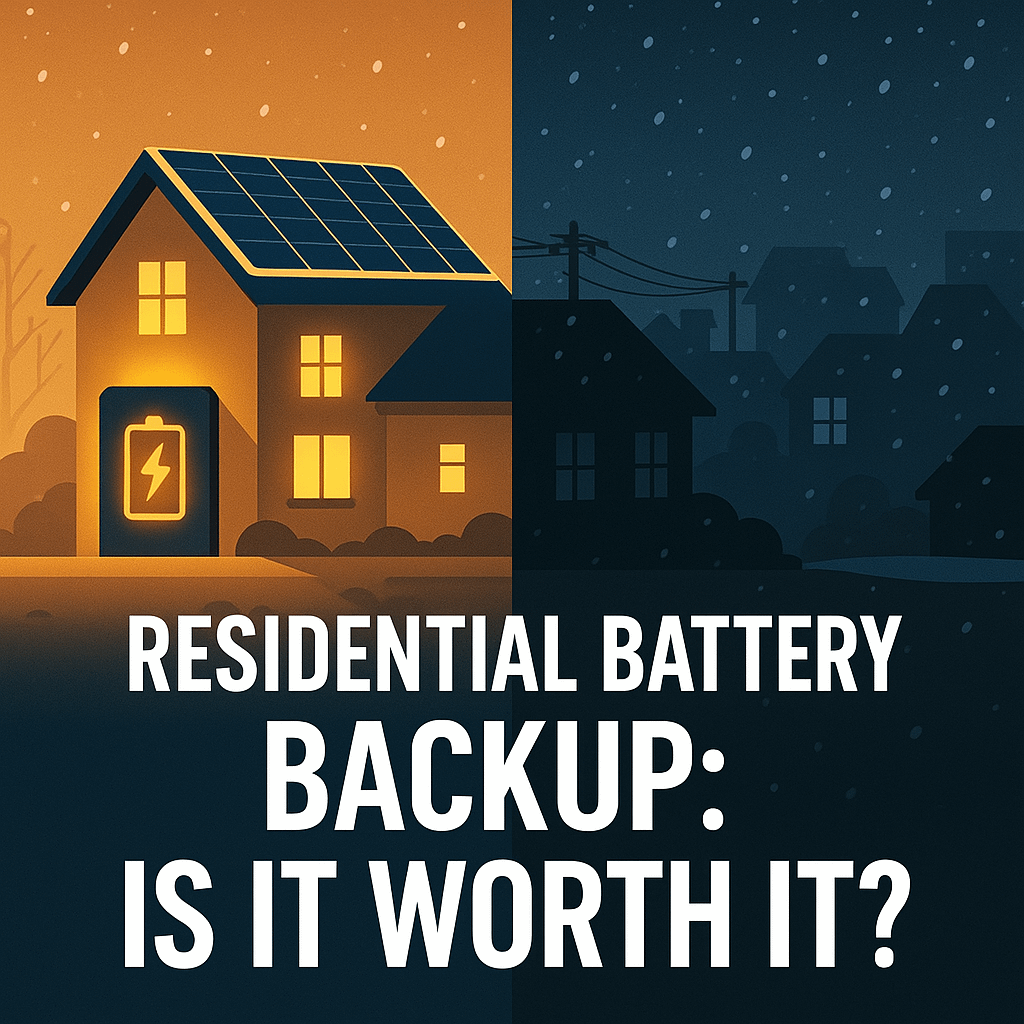Are you considering going solar? With summer just around the corner, there’s never been a better time to make the switch!
The Inflation Reduction Act has introduced significant changes to residential solar incentives, making it even more enticing for homeowners like you. Don’t miss out on the fantastic benefits and the opportunity to have your installation ready for the sunniest season.
In this article, we’ll explain how this groundbreaking legislation makes solar power more accessible and cost-effective than ever before. Plus, we’ll introduce you to EnergySage, a valuable resource that can help simplify your solar journey. Ready to explore the incredible world of residential solar power and finally set up the installation you’ve been contemplating? You’ve come to the right place! We’ll guide you through the amazing solar incentives that await you – it’s time to harness the power of the sun and significantly reduce your energy bills. So, let’s jump in – rest assured, it will be worth your while!
Residential Solar Power: A Comprehensive Introduction
The sun has been a source of energy for millions of years, and today, more than ever, we’re harnessing its power to create clean and sustainable electricity. Residential solar power has become increasingly popular among homeowners, and with good reason. Let’s explore the basics of solar energy, how residential solar systems work, and the benefits of going solar.
Solar energy is created by capturing sunlight and converting it into electricity. This conversion is done using photovoltaic (PV) cells, which are made of semiconductor materials like silicon. When sunlight hits the PV cells, it excites the electrons, creating a flow of electricity. This process is known as the photovoltaic effect.
A residential solar power system typically consists of several key components:
- Solar panels: These are the primary devices that capture sunlight and convert it into electricity through the photovoltaic effect. Solar panels are typically installed on rooftops or other sunny areas around your home.
- Inverter: The electricity generated by solar panels is in the form of direct current (DC). However, most household appliances require alternating current (AC). The inverter converts the DC electricity into AC electricity, making it usable in your home.
- Battery storage (optional): Although not always necessary, battery storage systems can store excess solar energy for later use. This is especially useful during periods of low sunlight or during power outages.
- Metering system: This measures the amount of electricity your solar panels generate and the amount of electricity you consume. In some cases, it also measures any excess electricity that you send back to the grid.
- Grid connection: Most residential solar systems are connected to the grid, allowing homeowners to draw electricity from the grid when their solar system isn’t producing enough power.
The benefits of residential solar power are numerous, including:
- Reduced energy bills: By generating your own electricity, you can significantly reduce your monthly utility bills. The more electricity your solar system produces, the less you need to buy from the grid.
- Energy independence: Solar power allows you to rely less on utility companies and fossil fuels, increasing your energy independence and security.
- Environmental impact: Solar energy is a clean and renewable energy source, producing no greenhouse gas emissions. By going solar, you help reduce your carbon footprint and contribute to a more sustainable future.
- Increased property value: Studies have shown that homes with solar installations often have higher property values and sell faster than those without.
- Tax incentives: The federal government and many states offer tax incentives to encourage homeowners to invest in solar power, making it an even more attractive option.
As you can see, residential solar power offers a range of benefits, making it an excellent choice for homeowners looking to save money, reduce their environmental impact, and increase their energy independence.
Capitalizing on the Inflation Reduction Act: Unleashing Major Savings for Your Residential Solar Journey
The Inflation Reduction Act has made a significant impact on the solar industry, particularly in the residential sector. This groundbreaking legislation has made it more affordable and accessible for homeowners to install solar power systems, ultimately promoting clean energy and reducing reliance on fossil fuels. In this section, we’ll delve into the key provisions of the Inflation Reduction Act and how they specifically benefit residential solar power adoption.
- Extension and Increase of the Federal Solar Tax Credit: One of the most important provisions of the Inflation Reduction Act is the extension and increase of the federal solar tax credit, also known as the Investment Tax Credit (ITC). Before the Act, the tax credit stood at 26% for solar installations completed in 2020 and 2021. The Inflation Reduction Act has not only extended the ITC through 2034 but also increased it to 30% for systems installed between 2022 and 2032. This means homeowners can receive a dollar-for-dollar reduction on their income taxes, equivalent to 30% of the cost of their solar system, making solar installations more affordable.
- Energy Storage Incentives: The Act also includes incentives for energy storage systems with a capacity rating of 3 kilowatt-hours (kWh) or greater when installed alongside solar power systems. This promotes the adoption of battery storage solutions, allowing homeowners to store excess solar energy for use during periods of low sunlight or power outages, further enhancing the benefits of residential solar power.
- Impact on Utility Rebates and State Incentives: The Inflation Reduction Act has a positive effect on utility rebates and state incentives. By excluding most utility rebates from income taxes, homeowners can enjoy additional savings on their solar installations. Furthermore, state rebates and tax credits do not generally reduce the federal solar tax credit, allowing homeowners to take advantage of multiple incentives and significantly reduce the overall cost of their solar power systems.
- Support for Community Solar Projects: The Act also supports homeowners who invest in off-site community solar projects. This allows those who may not have suitable rooftop space for solar panels or face other limitations to reap the benefits of solar energy by purchasing an interest in a shared solar project. The tax credit can still be claimed by eligible participants, promoting the growth of community solar and expanding access to renewable energy.
The Inflation Reduction Act has played a pivotal role in bolstering the residential solar power industry. By providing financial incentives and support for various solar projects, the Act has made solar energy more accessible and cost-effective for homeowners, encouraging a shift towards clean and renewable energy sources.
The Federal Solar Tax Credit: A Key Incentive for Your Solar Investment
When it comes to investing in residential solar power, the federal solar tax credit is one of the most significant financial incentives available. This tax credit, formally known as the Investment Tax Credit (ITC), offers homeowners substantial savings on the cost of their solar photovoltaic (PV) system, making it even more attractive to switch to clean, renewable energy.
Here’s how the federal solar tax credit works: As a homeowner, you can claim a percentage of the total cost of your solar PV system on your federal income taxes. This percentage is determined by the installation year of your system, with the Inflation Reduction Act extending and increasing the ITC. For solar PV systems installed between 2022 and 2032, the tax credit is 30%. In 2033, the credit decreases to 26%, and in 2034, it drops to 22%. The tax credit expires starting in 2035 unless Congress renews it.
To be eligible for the federal solar tax credit, you must meet the following criteria:
- Your solar PV system must have been installed between January 1, 2017, and December 31, 2034.
- The solar PV system must be located at a residence you own in the United States.
- You must either own the solar PV system (i.e., you purchased it with cash or through financing) or have purchased an interest in an off-site community solar project, if the electricity generated is credited against and does not exceed your home’s electricity consumption.
The expenses that qualify for the tax credit include:
- Solar PV panels or PV cells
- Contractor labor costs for onsite preparation, assembly, or original installation, including permitting fees, inspection costs, and developer fees
- Balance-of-system equipment, such as wiring, inverters, and mounting equipment
- Energy storage devices with a capacity rating of 3 kilowatt-hours (kWh) or greater (for systems installed after December 31, 2022)
- Sales taxes on eligible expenses
By taking advantage of the federal solar tax credit, you can significantly reduce the overall cost of your solar investment, making it an ideal time to transition to solar power. Don’t miss out on this incredible opportunity to save on your energy bills and contribute to a cleaner, more sustainable future.
Discover the EnergySage Solar Marketplace: Simplifying Your Solar Journey
Finding the right solar installation company and navigating the complex world of solar incentives can be daunting. That’s where the EnergySage Solar Marketplace comes in, making your solar journey smoother and more straightforward.
EnergySage’s Solar Marketplace is an online platform designed to help you compare quotes from up to 7 vetted solar installers in your area. No calls, no hassle – you can shop right from your laptop. Here’s what the Solar Marketplace offers to simplify your solar journey:
- Transparent comparison: The platform allows you to compare multiple solar installation quotes side by side, giving you a clear understanding of the costs, savings, and system details. This transparency empowers you to make an informed decision, ensuring you get the best deal possible.
- Unbiased energy advisor: If you need help throughout the process, EnergySage provides an unbiased energy advisor who can guide you and answer your questions. This expert support ensures you feel confident in your choice and fully understand the various options available to you.
- Vetted solar installers: All solar installers featured on the Solar Marketplace have been thoroughly vetted by EnergySage, ensuring they meet high standards of quality, expertise, and customer service. You can trust that you’re working with reputable professionals who are committed to delivering the best solar experience.
- Potential savings: According to the National Renewable Energy Laboratories (NREL), using the Solar Marketplace can save you thousands of dollars on your solar investment. By comparing multiple quotes, you can identify the most cost-effective option and maximize your savings.
- Free to use: The best part? Using EnergySage’s Solar Marketplace is completely free for you to use! There’s no cost to access this valuable resource, making it even easier to start your solar journey.
Don’t let the complexity of going solar hold you back. Discover the EnergySage Solar Marketplace and simplify your solar journey today. Unlock the power of the sun, save on your energy bills, and contribute to a greener future!
Maximizing the Benefits of the Inflation Reduction Act for Residential Solar Power
The Inflation Reduction Act has significantly improved the landscape for residential solar power incentives. To make the most of these changes, homeowners should consider various strategies and combine different incentives. In this section, we’ll discuss ways to maximize the benefits of the Inflation Reduction Act, focusing on the federal solar tax credit, state and utility incentives, and the long-term financial and environmental benefits of residential solar power. We’ll also highlight how EnergySage’s Solar Marketplace can simplify the entire process for you.
Strategies for homeowners to take advantage of the federal solar tax credit
- Plan your installation timeline: The federal solar tax credit decreases over time, so it’s essential to plan your solar installation accordingly. By installing your solar PV system sooner rather than later, you can maximize the tax credit percentage and save more on your investment.
- Consult a tax professional: A tax professional can help you understand your eligibility for the federal solar tax credit and ensure that you claim the maximum amount available to you.
- Keep track of eligible expenses: Remember to keep documentation of all eligible solar installation expenses, as these will be necessary when claiming your tax credit.
Leveraging Federal, State, and Utility Incentives: The Ultimate Savings Combo
To optimize your solar investment, it’s crucial to combine federal, state, and utility incentives. State and local governments, as well as utilities, often offer additional financial incentives, such as rebates, grants, or tax credits, to encourage solar adoption. By combining these incentives with the federal solar tax credit, you can significantly reduce your solar installation costs and enjoy a shorter payback period. For a comprehensive list of state incentives click here.
Embracing a Brighter Future: Long-Term Financial and Environmental Perks of Residential Solar Power
Investing in residential solar power offers numerous long-term benefits:
- Financial savings: Solar power can help you save on your energy bills for years to come, providing a reliable return on investment.
- Increased property value: Solar-powered homes tend to have higher property values and sell faster than their non-solar counterparts.
- Environmental impact: By generating clean, renewable energy, you’re reducing your carbon footprint and contributing to a greener, more sustainable future.
Simplifying Your Solar Journey: The Power of EnergySage’s Solar Marketplace
EnergySage’s Solar Marketplace streamlines the process of going solar by offering transparent price comparisons, unbiased energy advisors, and vetted solar installers. The platform enables you to find the best solar solution for your home, maximizing your savings, and simplifying the entire journey.
By understanding the benefits of the Inflation Reduction Act and combining various incentives, you can make the most of your residential solar power investment. Let EnergySage’s Solar Marketplace help you unlock the power of the sun and contribute to a more sustainable future.
Sunny Savings Ahead: Embrace the Power of Residential Solar Incentives
In conclusion, the Inflation Reduction Act has brought significant improvements to residential solar power incentives, making it more accessible and cost-effective for homeowners than ever before. By understanding and combining the federal solar tax credit, state, and utility incentives, you can maximize your investment and enjoy long-term financial and environmental benefits. EnergySage’s Solar Marketplace simplifies the entire process, helping you find the perfect solar solution for your home. So why wait? The future is bright, and it’s time to harness the power of the sun to unlock incredible savings on your energy bills. Don’t miss out on this opportunity to contribute to a greener, more sustainable world.
This article is part of Evergreen Off-Grid’s AI Assist blog category. Find human only generated content here.
Evergreen Off-Grid generated this article in part with GPT-3, OpenAI’s large-scale language-generation model. Upon generating draft language, Evergreen Off-Grid reviewed, edited, and revised the language to our liking and we take ultimate responsibility for the content of this publication.






